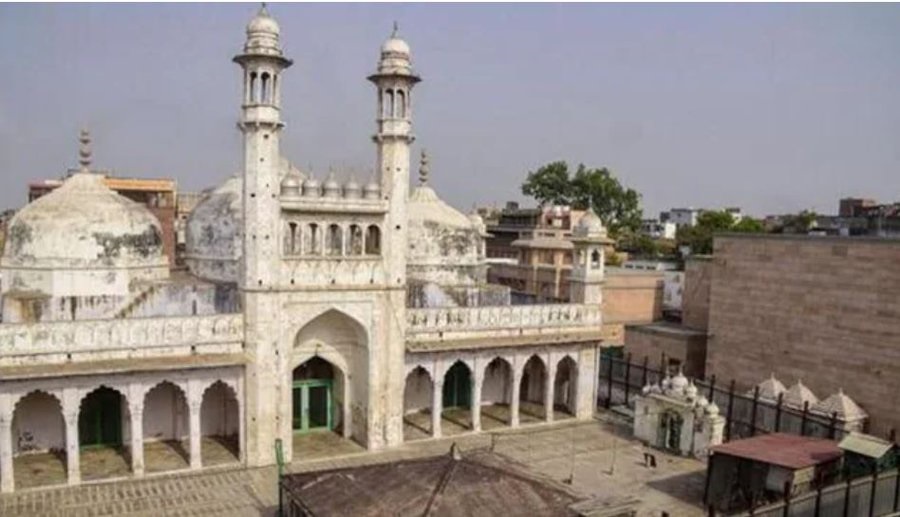
Gyanvapi mosque survey: SC orders stay till July 26; tells petitioners to move Allahabad HC

The Supreme Court on Monday morning (July 24) directed that the Varanasi court’s order allowing ASI survey of the Gyanvapi mosque premises (except Wuzukhana) be enforced only after 5 pm on July 26, 2023, reported ANI.
In the meantime, the petitioners have been granted liberty to move the Allahabad High Court.
#WATCH | On Supreme Court's order, Vishnu Shankar Jain, representing the Hindu side in the Gyanvapi mosque case, says "The SC has passed a stay on the execution of the order of the Varanasi court on survey of the Mosque complex to allow the Anjum to challenge the same before the… pic.twitter.com/QuxIhx5c9X
— ANI (@ANI) July 24, 2023
The SC asked the Allahabad High Court to hear an appeal filed by the mosque committee before the expiry of its order.
A bench headed by Chief Justice DY Chandrachud took note of the submissions made by senior advocate Huzefa Ahmadi, who appeared in the court on behalf of the mosque committee, stayed the operation of the order till Wednesday evening (July 26), and asked the committee to file an appeal in the meantime.
“We are of the view that some breathing time should be granted to the mosque committee,” said the bench that also comprised Justices JB Pardiwala and Manoj Misra. “We permit the petitioner (mosque committee) to move the high court under Article 227 (writ jurisdiction of high courts), challenging the order of the district judge of Varanasi, having taken regard of the fact that the order was passed at 4:30 pm on July 21 and the ASI survey is being carried out today,” said the order.
“To permit them some breathing time, we direct that the district court order shall not be enforced till 5 pm on July 26. If the petitioner moves the high court, the registrar-judicial of the high court shall ensure that it is placed before a roster (a bench) so that it is heard before the status quo order ends,” the bench said in its order.
Solicitor General Tushar Mehta, who was representing the Uttar Pradesh government, took instructions and informed the bench that the ASI was conducting photography and radar-imaging at the site and presently, no invasive or excavation work was underway.
A 30-member team of the Archaeological Survey of India (ASI) commenced a scientific survey of the Gyanvapi mosque complex in Varanasi, Uttar Pradesh on Monday (July 24) morning to determine if it was built upon a temple.
Besides the ASI team, which entered the complex around 7 am, the lawyers of all the Hindu petitioners to the legal dispute are also present at the spot, Madan Mohan Yadav, one of the counsel, said.
VIDEO | ASI team arrives in UP's Varanasi to conduct a scientific survey of Gyanvapi mosque to determine if the mosque located next to the Kashi Vishwanath temple is built upon a temple. pic.twitter.com/ypA2irbdrp
— Press Trust of India (@PTI_News) July 24, 2023
Varanasi Police Commissioner Ashok Mutha Jain and the DM held a meeting with both the Hindu and Muslim sides to the dispute on Sunday night (July 23) to share information about the survey with them.
However, citing the Supreme Court hearing scheduled for Monday (July 24) on the order for the survey, the lawyers of the Muslim side demanded that the date for the exercise be postponed, Yadav said. He added that the Muslim side has boycotted the survey.
District judge AK Vishvesh on Friday (July 21) directed the ASI to conduct a detailed scientific survey — including excavations, wherever necessary — to determine if the mosque was built upon a temple.
Also read: Gyanvapi mosque: Varanasi court orders ASI survey; Hindu side dubs it ‘turning point’
The mosque’s wazukhana, where a structure claimed by Hindu litigants to be a shivling while the Muslims say it’s a fountain, will not be part of the survey, following an earlier Supreme Court order protecting that spot in the complex.
The judge directed the ASI to submit a report to the court by August 4, along with videos and photographs of survey proceedings.
Even as the survey is being conducted, the mosque management committee filed a petition in the Supreme Court against the Varanasi district court’s order allowing the inspection, according to sources.
Also read: SC defers scientific survey to determine age of ‘Shivling’ found at Gyanvapi mosque
The petition was filed in May by five women. They had also asked for permission to pray at the “Shringar Gauri Sthal” inside the shrine complex in an earlier plea to the court.
(With agency inputs)

